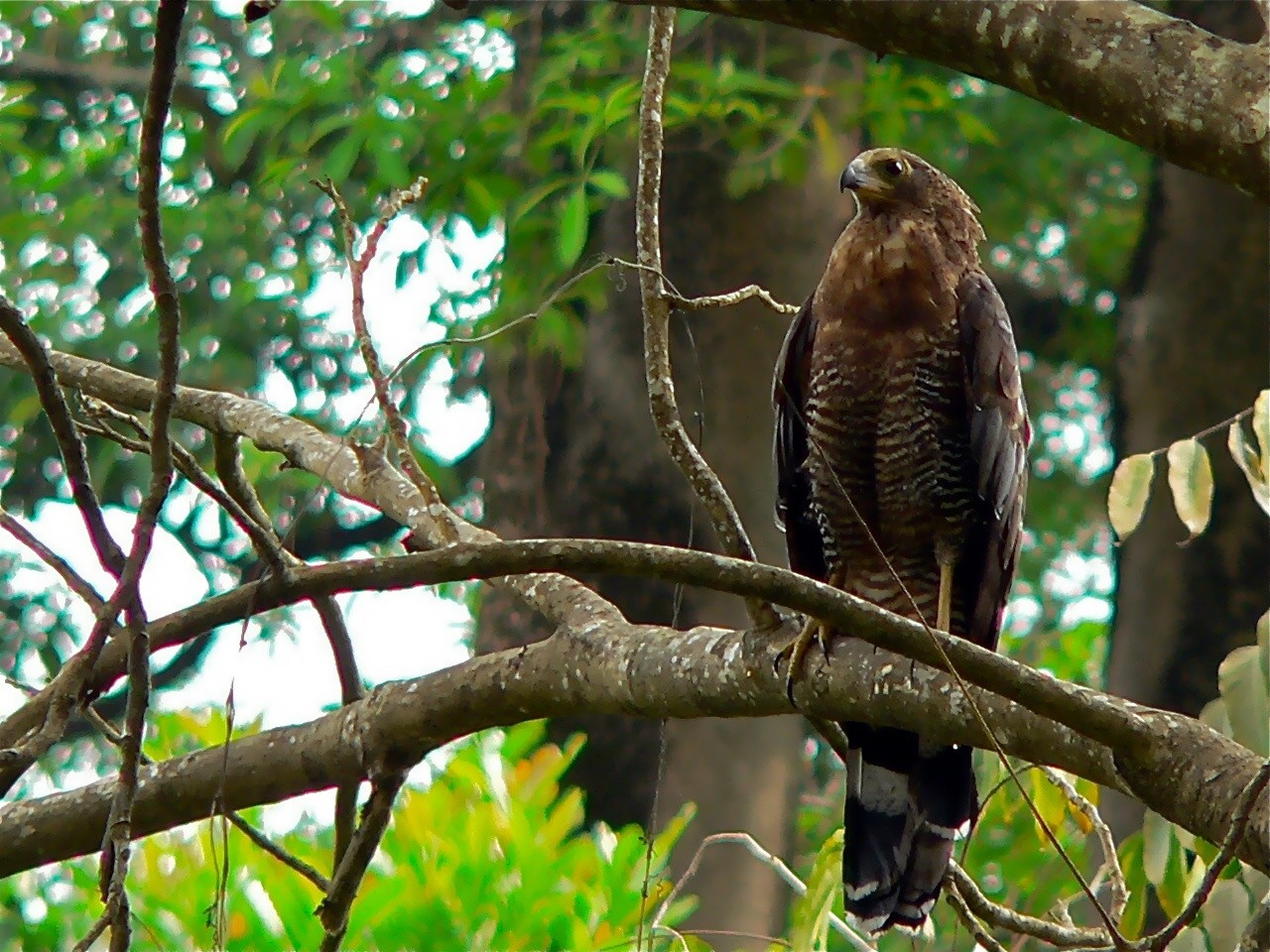African Harrier-hawk
A species of Harrier-hawks, Also known as Gymnogene Scientific name : Polyboroides typus Genus : Harrier-hawks
African Harrier-hawk, A species of Harrier-hawks
Also known as:
Gymnogene
Botanical name: Polyboroides typus
Genus: Harrier-hawks
Content
Description General Info
 Photo By Bernard DUPONT , used under CC-BY-SA-2.0 /Cropped and compressed from original
Photo By Bernard DUPONT , used under CC-BY-SA-2.0 /Cropped and compressed from original Description
The African harrier-hawk is a medium-sized raptor. The upperparts, head and breast are pale grey. The belly is white with fine dark barring. The broad wings are pale grey with a black trailing edge fringed with a narrow white line. The tail is black with a single broad white band. There is a bare facial patch of variable colour, usually red or yellow. Genders are similar, but young birds have pale brown instead of grey, and dark brown replacing black. An unusual trait of this species is the double-jointed knees it possesses, which enable it to reach into otherwise inaccessible holes and cracks for prey. A comparable leg-structure and behaviour can be found in the Neotropical crane hawk; a case of convergent evolution. The call is a whistled sueee-sueee-sueee. 
Size
65 cm
Colors
Brown
Black
Gray
White
Life Expectancy
14 years
Nest Placement
Tree
Feeding Habits
African Harrier-hawk is omnivorous, feeding on oil palm fruit and small vertebrates. It uniquely climbs to access cavity-nesters' nests for eggs and nestlings, also preying on introduced species like pigeons and squirrels.
Habitat
African Harrier-hawk is typically found in diverse habitats ranging from natural woodlands and savannas to urban areas with scattered trees. The species inhabits all forms of forests, including moist woodlands, arid steppes, and the Ethiopian highlands. While it occurs in extensive forests, it is generally limited to edges and river corridors as opposed to the interior of closed-canopy regions. African Harrier-hawk is also present in farmlands, towns, tree plantations, and disturbed forest types. Its altitudinal range extends from sea level up to 3000 meters.
Dite type
Carnivorous
General Info
Feeding Habits
Bird food type
Species Status
Not globally threatened.